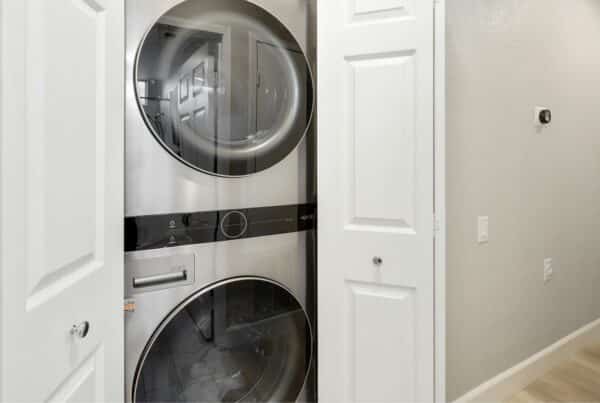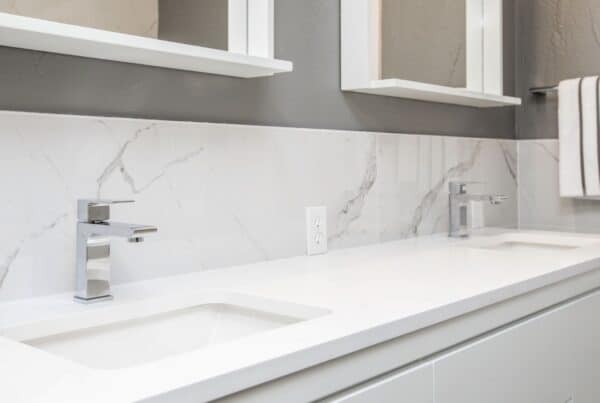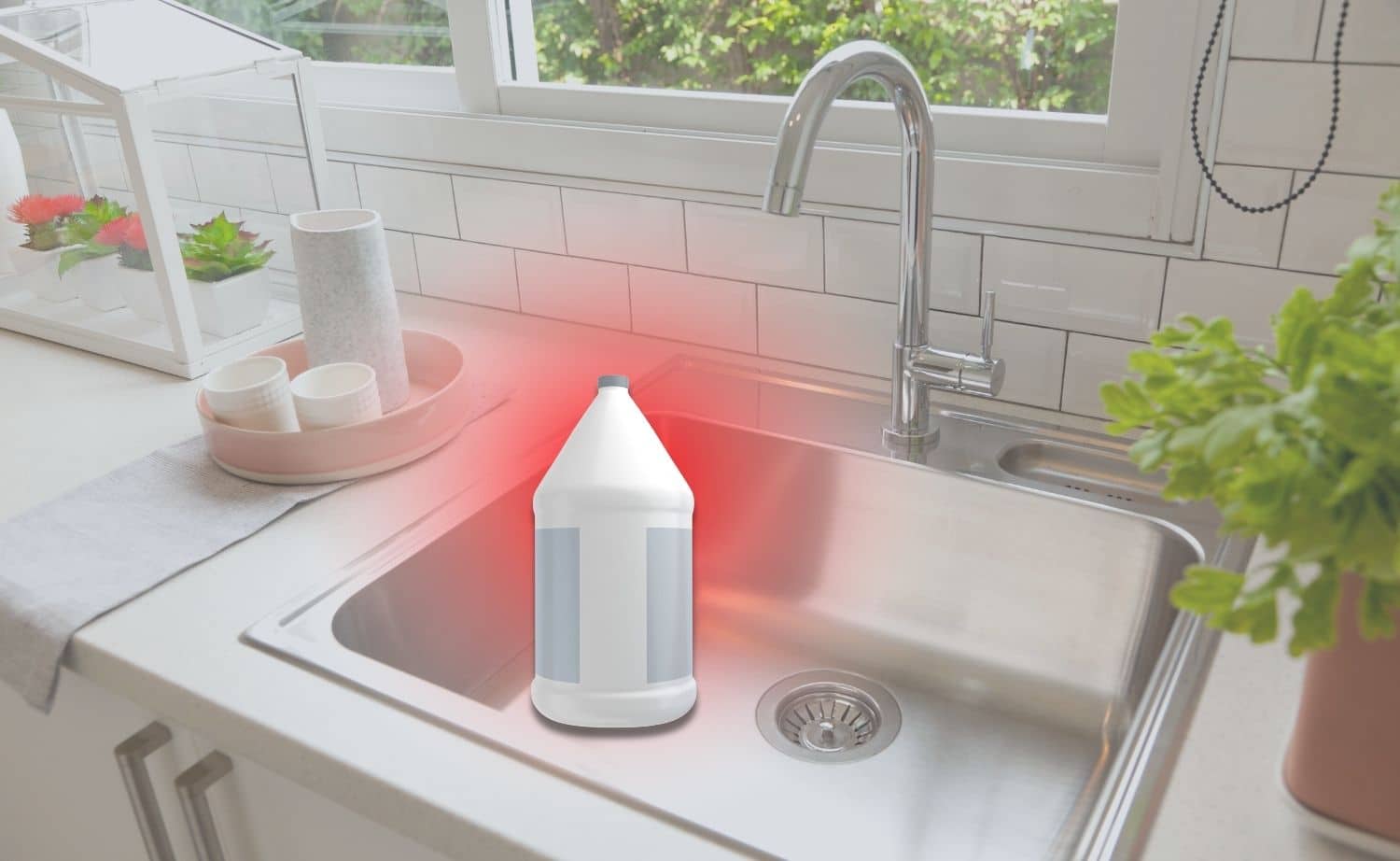
When the kitchen or bathroom sink starts to smell, trying to pour bleach down the drain can seem like the quickest fix. It promises to clean, disinfect, and remove anything unpleasant. But what happens when that strong cleaner goes down your drain?
Bleach can help in a few limited cases, but most of the time it harms more than it helps. Using it incorrectly can damage plumbing, harm septic systems, and create unsafe fumes in your home.
This guide explains when bleach can be used safely, when to avoid it, and what better options will actually protect your home’s plumbing.
When It Might Be Safe to Pour Bleach in a Drain
Bleach can disinfect surfaces and pipes when used sparingly and correctly. The key is dilution and timing.
If your plumbing connects to a municipal sewer line, not a septic system, and you need to disinfect a drain after contact with raw meat or similar contaminants, you can safely use a diluted bleach solution.
Here is how to do it properly:
- Mix one tablespoon of bleach with one gallon of cold water.
- Slowly pour it down the drain.
- Immediately follow with another gallon of cold water to flush the pipes.
This one-time cleaning can eliminate germs without leaving bleach to sit in the trap or fittings. Still, it should never become a weekly habit. Limit this method to once every few months or less.
Why cold water? Cold water prevents the chemical from reacting too quickly with residue in your pipes. Hot water can accelerate chlorine vapor release and reduce the effectiveness of the disinfectant before it reaches the deeper parts of the drain.
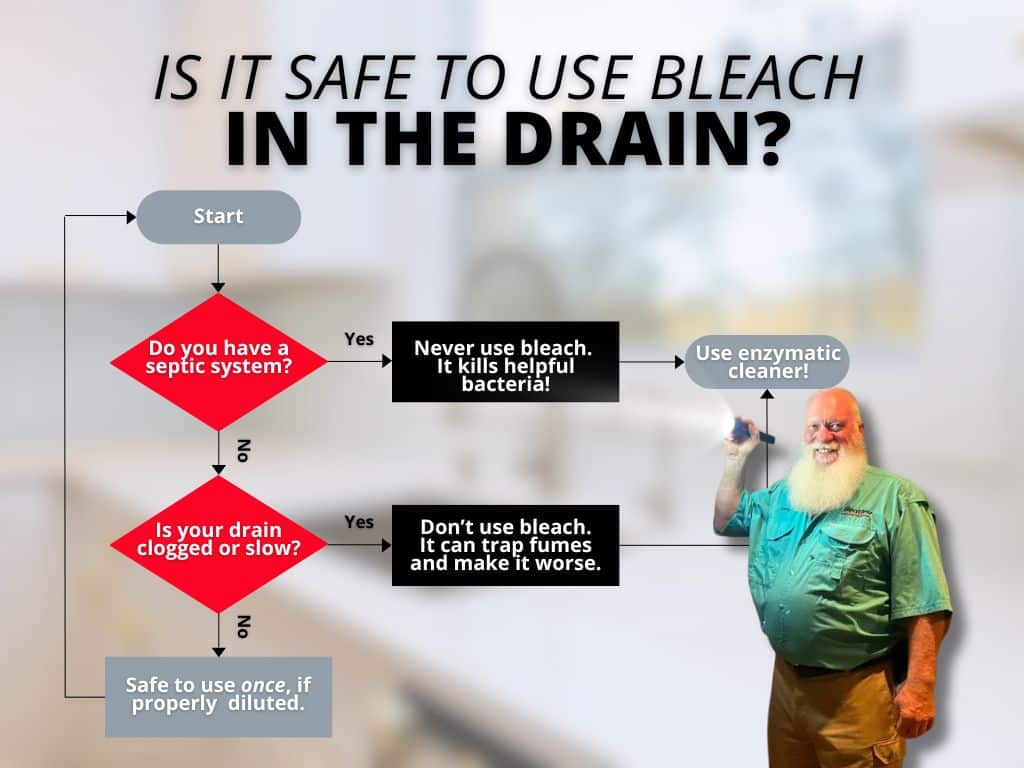
When Bleach Becomes a Serious Problem
Bleach is a strong chemical that reacts easily with other substances, so it can be hazardous to pour it down the drain. According to the Environmental Protection Agency (EPA), bleach can create toxic compounds when it interacts with organic material.
Here are common scenarios where bleach should never go down the drain:
- Homes with septic systems. The bacteria that break down waste in your tank are essential for proper function. Bleach kills those bacteria, leading to clogs and system failure. Once disrupted, the balance can take weeks to recover, even with treatments.
- Blocked or slow drains. Pouring bleach into a clog traps the chemical, allowing it to react with residue and release harmful gases. This often turns minor blockages into hard buildups that require mechanical removal.
- After using other cleaners. Mixing bleach with vinegar, ammonia, or acidic cleaners creates toxic fumes such as chlorine gas or chloramine vapors. Even small amounts of leftover product can cause the reaction.
- Unknown odor sources. Bleach only hides the smell. If the odor comes from mold, a dry P-trap, or venting problems, bleach cannot solve it and may push moisture deeper into porous materials.
Inspectors often find that persistent chemical odors signal a deeper plumbing issue. During inspection, it is common to discover corroded joints or trapped moisture from overuse of strong cleaners.
Over time, the combination of chemical damage and humidity encourages mold growth and weakens plumbing components. What starts as a simple odor fix can turn into a moisture problem that affects cabinets, drywall, or flooring beneath the sink.
What Happens Inside Your Plumbing
The inside of a drain is full of residue: food particles, soap film, and sometimes bacteria or mold. When bleach reaches this mixture, it triggers oxidation reactions that create heat and gas.
Over time, these reactions can…
- Make metal or PVC pipes weak
- Break down rubber gaskets and seals
- Leave behind chlorine vapors that affect indoor air
Homes built before the 1990s often have galvanized steel or copper pipes that corrode faster when exposed to bleach. Even newer PVC systems can develop brittleness or leaks after repeated exposure.
Bentley has inspected cases where chemical corrosion led to slow leaks that went unnoticed for months. These leaks often cause swelling in wooden cabinetry or flooring and contribute to mold spores around baseboards.
A note on drain traps: The curved section under a sink, called the P-trap, holds water to block sewer gas. When bleach sits in that section, it can dry out the trap and break down the rubber gasket. That creates the very smell the homeowner was trying to remove.
Health and Air Quality Risks
Bleach fumes affect more than plumbing. The Centers for Disease Control and Prevention (CDC) notes that chlorine-based cleaners can irritate the lungs, eyes, and throat, especially in small bathrooms or kitchens with limited ventilation.
Mixing bleach with another cleaner intensifies the risk. For example:
- Bleach plus vinegar produces chlorine gas, which can cause coughing, burning eyes, and chest pain.
- Bleach plus ammonia forms chloramine gas, which leads to shortness of breath and fluid buildup in the lungs.
Even when not mixed with other chemicals, overuse of bleach indoors can affect indoor air quality. Lingering vapors contribute to respiratory irritation and can worsen asthma symptoms.
Always keep windows open and fans running when using any bleach product. Wear gloves and avoid inhaling the fumes.
Safer Alternatives to Bleach for Drain Cleaning
Many safer options can freshen and disinfect drains without harming plumbing or air quality.
|
Problem |
Safe Solution |
Why It Works |
|
Mild odor |
Baking soda followed by vinegar |
The fizz lifts light buildup and neutralizes acids. |
|
Grease or soap residue |
Boiling water flush |
Melts fats and rinses them through the line. |
|
Disinfection |
Hydrogen peroxide |
Kills bacteria without damaging pipes. |
|
Persistent odor |
Clean the trap manually |
Removes grime and prevents gas leaks. |
Extra tip: Pour boiling water down each drain once a week to prevent buildup. It keeps traps full and discourages bacteria growth.
These natural options maintain healthy plumbing while reducing your home’s chemical exposure. Bentley Home Inspection often recommends these techniques to homeowners who want to extend the life of their systems.
If a smell returns often, resist the urge to reach for bleach. A recurring odor usually points to moisture problems, biofilm growth, or improper venting. Issues like these can be quickly confirmed through a professional inspection.
What Persistent Odors Usually Mean
If you notice a consistent musty or sewer-like smell, bleach will not help because it does not address the cause. Common sources include:
- Dry P-traps: When water evaporates in unused drains, gases escape into the room. Run water in each drain weekly to refill the trap.
- Mold or bacteria buildup: Moisture in overflow openings or joints can grow mold that releases odor.
- Leaky seals or venting issues: Damaged seals or blocked vents allow gases to escape into living areas.
- Biofilm: A slimy layer inside pipes made of bacteria and residue. It can trap odors until physically removed.
When a professional inspection is performed, these problems can be spotted early. Bentley Home Inspection uses moisture meters and visual assessments to find hidden leaks and mold growth that DIY cleaning might miss.
Environmental Impact of Bleach Disposal
Every chemical poured down a drain eventually leaves your home. In large amounts, bleach contributes to the formation of harmful compounds such as trihalomethanes (THMs) once it reacts with organic matter in wastewater.
These compounds are known to harm aquatic ecosystems and stress local water treatment facilities. Even municipal plants that disinfect water with chlorine must control the total amount of these byproducts. Excess household bleach increases the load they must filter out.
If you live in East Tennessee, remember that many homes connect to waterways that feed into the Tennessee River system. Choosing natural cleaning methods makes a small but meaningful difference in keeping that ecosystem healthy.
Small lifestyle habits, such as using biodegradable cleaners and disposing of chemicals at proper collection sites, help reduce overall chlorine pollution in community wastewater.
How to Keep Drains Clean Without Chemicals
A regular maintenance routine prevents the need for harsh cleaners.
Monthly maintenance checklist:
- Flush drains with hot water once a week.
- Once a month, pour one cup of baking soda followed by one cup of vinegar, then rinse with hot water after ten minutes.
- Avoid pouring grease, coffee grounds, or thick liquids into sinks.
- Check for leaks under sinks at least once a month.
During inspections, the Bentley team often finds that slow drainage or smells come from minor buildup that could have been prevented with consistent maintenance. Keeping a short checklist by the sink can help homeowners remember these simple steps. Over time, this routine saves money and prevents moisture-related issues elsewhere in the home.
These small habits reduce buildup and odor while preserving the plumbing components inside your walls.
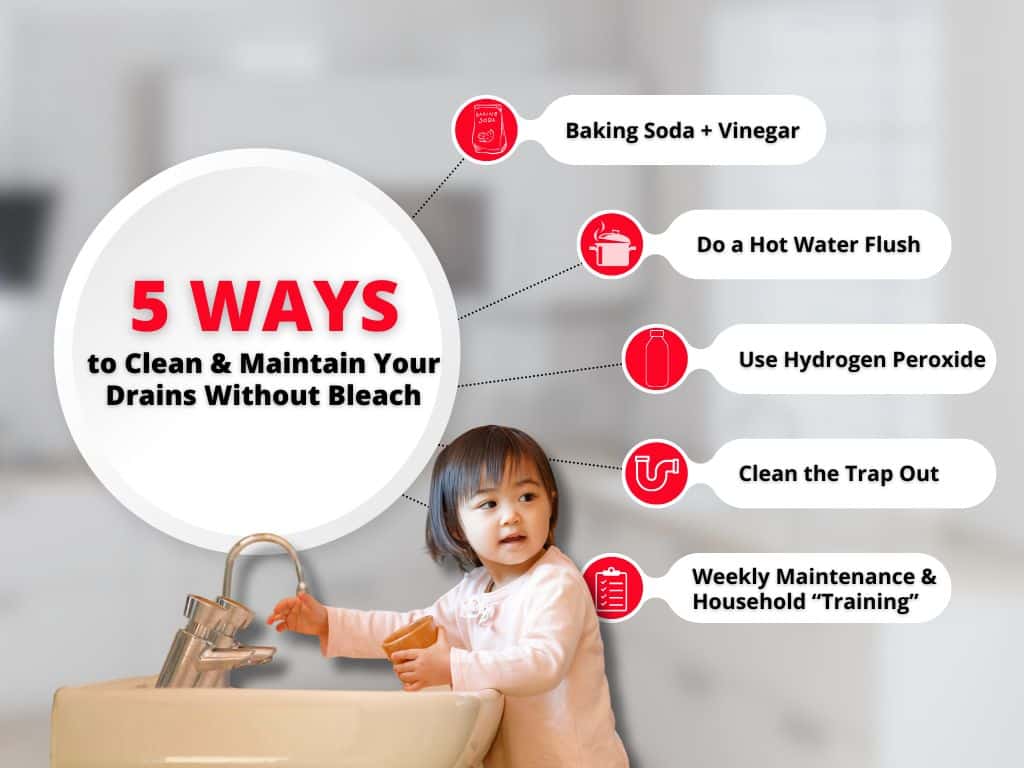
Other Recommended Maintenance Questions
Can bleach unclog a drain?
No. Bleach does not dissolve solids or grease and can react with debris to make blockages worse. Use a drain snake or an enzymatic cleaner instead.
Is bleach safe for garbage disposals?
Bleach should not be used in disposals. It can damage rubber seals and cause metal components to corrode. Use ice cubes and lemon peels instead for deodorizing.
Can I mix bleach with dish soap for extra cleaning power?
Never mix bleach with any product that contains ammonia, acids, or alcohols. The reaction releases hazardous fumes.
Why do my drains smell even after cleaning?
If odors return within a few days, it often means the issue is not in the visible drain but deeper in the plumbing or vent system. A professional inspection can pinpoint the exact source.
When to Call a Professional
If you have tried to pour bleach down the drain according to safe guidelines several times and the smell or drainage problem keeps returning, it is time to call for help. Persistent odors or recurring clogs usually mean a leak, mold growth, or venting issue.
Bentley Home Inspection provides detailed home inspections across East Tennessee that include visible plumbing, moisture, and ventilation checks. Their inspectors identify corrosion, standing water, and poor ventilation that can lead to odors or long-term pipe damage.
An annual inspection can reveal small problems before they turn into costly repairs. For example, a minor under-sink leak can develop mold growth that affects both plumbing and indoor air quality.
Conclusion
So, when is it truly safe to pour bleach down the drain? Only when it is diluted, used sparingly, and flushed right away with plenty of water. In almost every other situation, bleach causes more damage than it prevents.
Natural cleaners and regular maintenance will keep your drains fresh without risking corrosion or health concerns.
If your home’s drains have persistent odors or if you are unsure whether your plumbing system is being damaged by cleaners, schedule a professional inspection with Bentley Home Inspection. Their team can identify the source, ensure your system is safe, and help you maintain a healthy home.

